Veliky Novgorod
Veliky Novgorod is beautiful. Along with Smolensk, Pskov, Rybinsk, and a few other places in Russia, it is a city that is really interesting to visit; it is a city that truly has history, not just a set of tourist clichés.
Novgorod begins with the Novgorod Kremlin.

The city center looks the same as it did one/two/five hundred years ago. Only instead of a swamp under the fortress walls, they’ve made a smooth lawn.
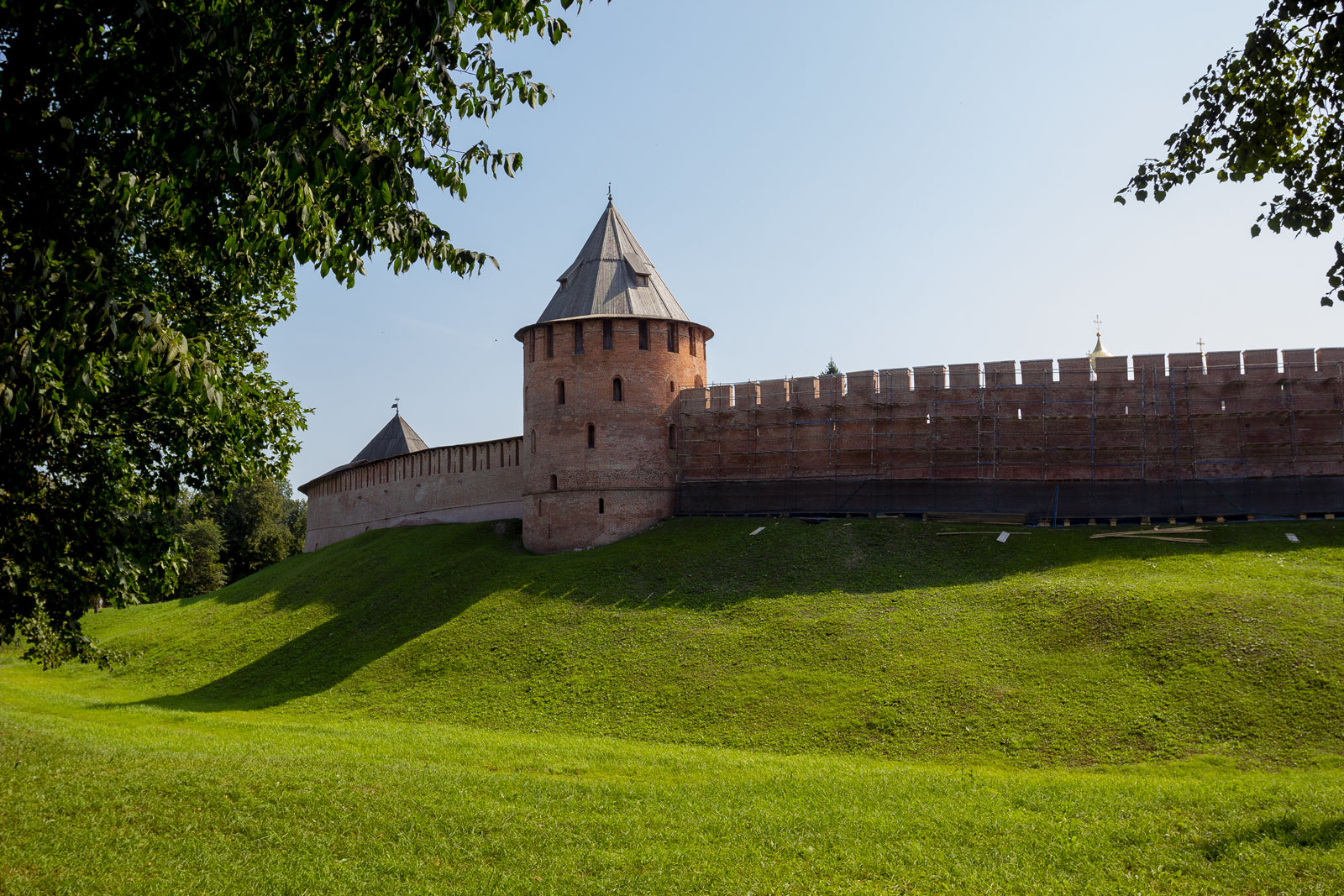
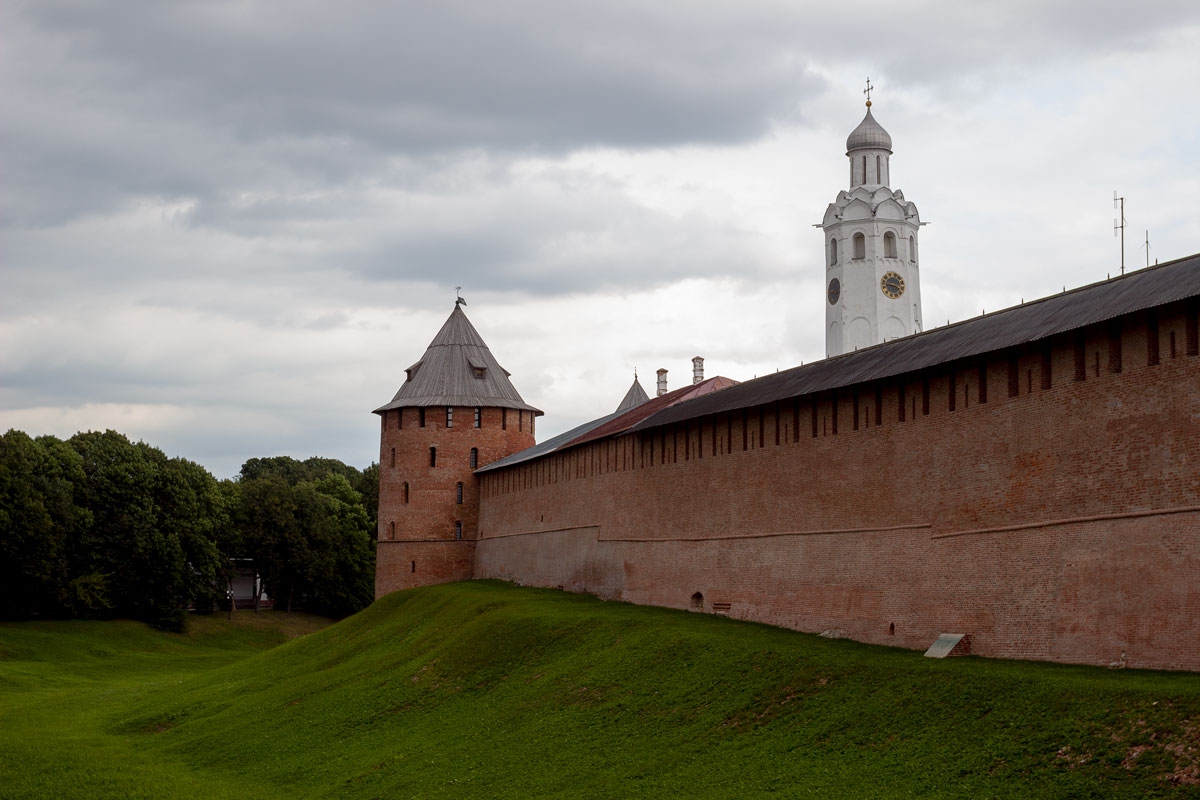
Veliky Novgorod is dotted with UNESCO World Heritage sites like a minefield, so whether the city authorities want to or not, they show a respectful attitude towards it. Historical views pop up here and there. Look, even the fisherman on the banks of the Volkhov River looks pre-revolutionary.

And this is the view almost everywhere. No modern object interferes.


An unspoiled view is wonderful. And yet, one should not confuse untouchedness with neglect: the embankment in the city is precisely neglected, it has not been repaired since 1159. Do we also need to include it in UNESCO or what?
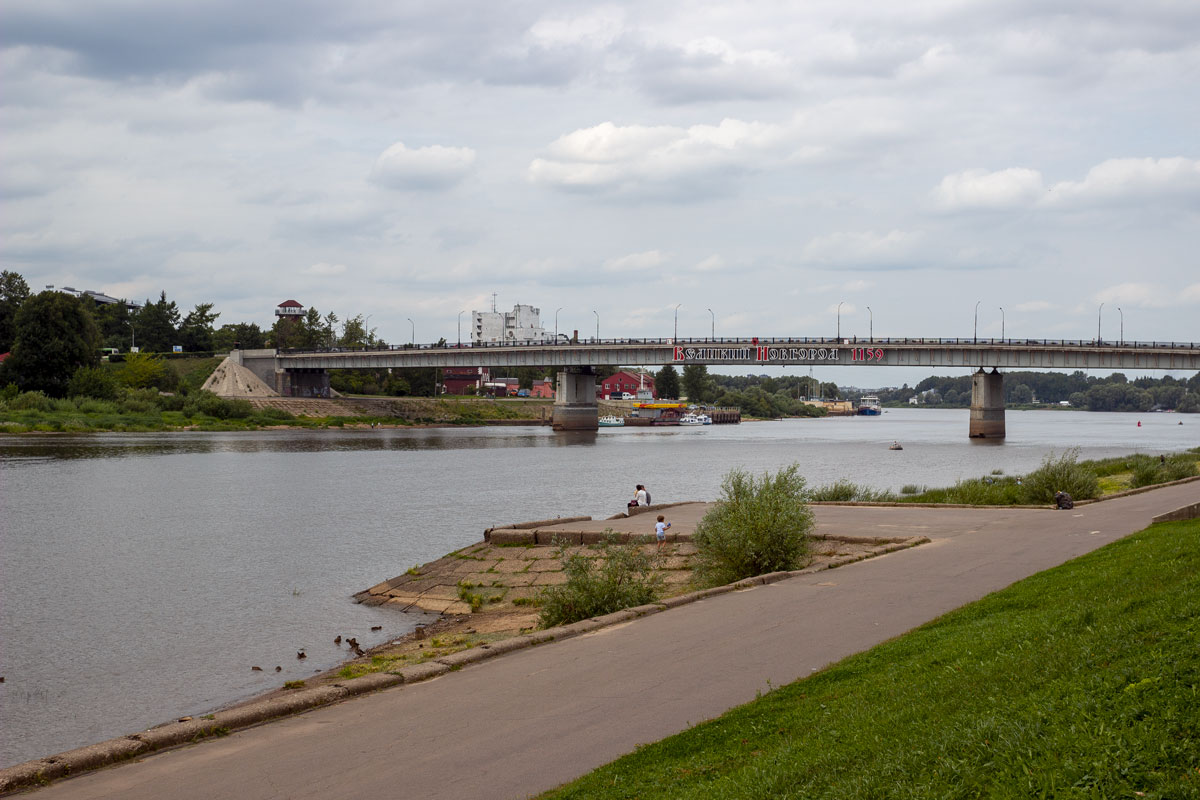
A fly in the ointment is added by a floating restaurant-ship, although it’s not so bad: high masts and stylization as an old frigate save it.

Life in Novgorod goes on in its own way, not paying much attention to such small things.

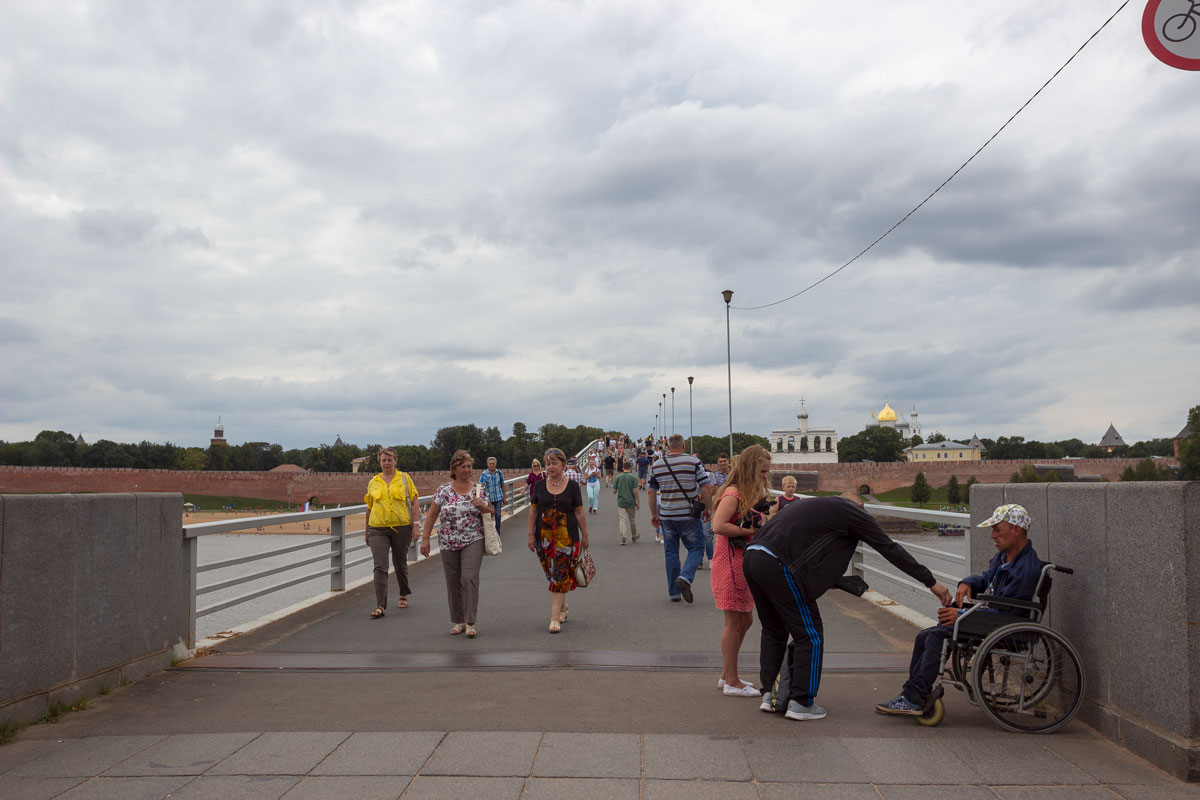
There is a city beach next to the Kremlin wall — monstrously cool in itself, although they could have arranged the beach and made it ten times cooler.

There are so many historical objects in the city that if you talk about each one, it will turn into an encyclopedia. Here is the most famous — St. Sophia Cathedral.
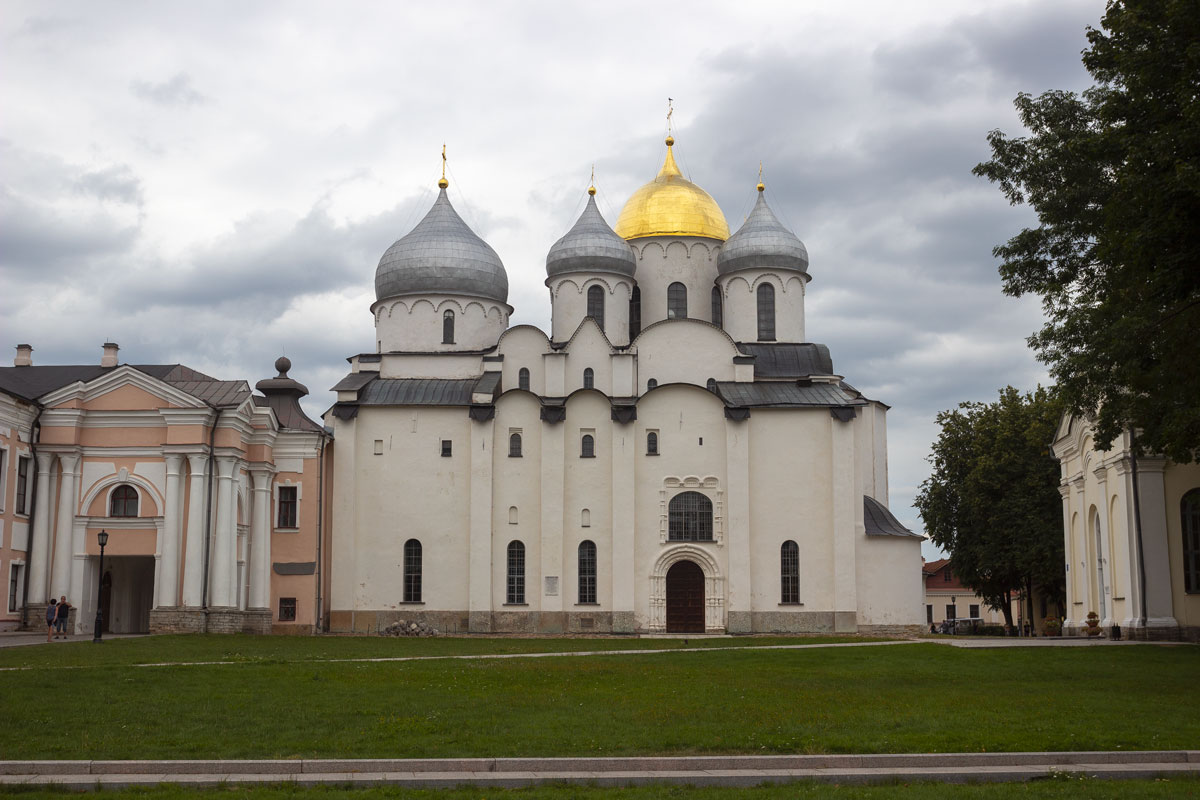
By and large, this is the oldest church in Russia. There are two other churches that are supposedly 50 years older, but one is located in Kerch and the other in Karachay-Cherkessia — just as much Russia as I am an archbishop.
St. Sophia Cathedral was built in the year 1050.

A 16th-century fresco has been preserved on the western wall of the cathedral.
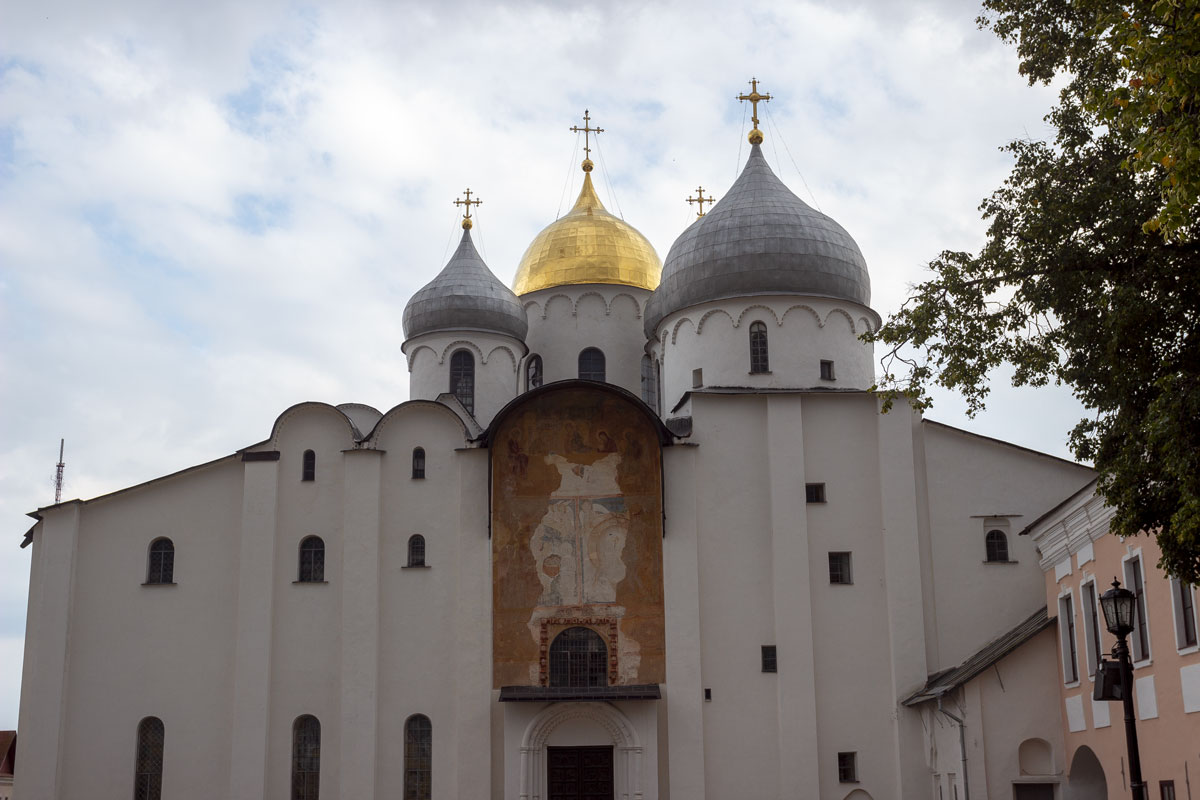
The bell tower was built in 1437.

A church of the 17th century was built on the site of a destroyed temple.

The clock chime was made in 1673.
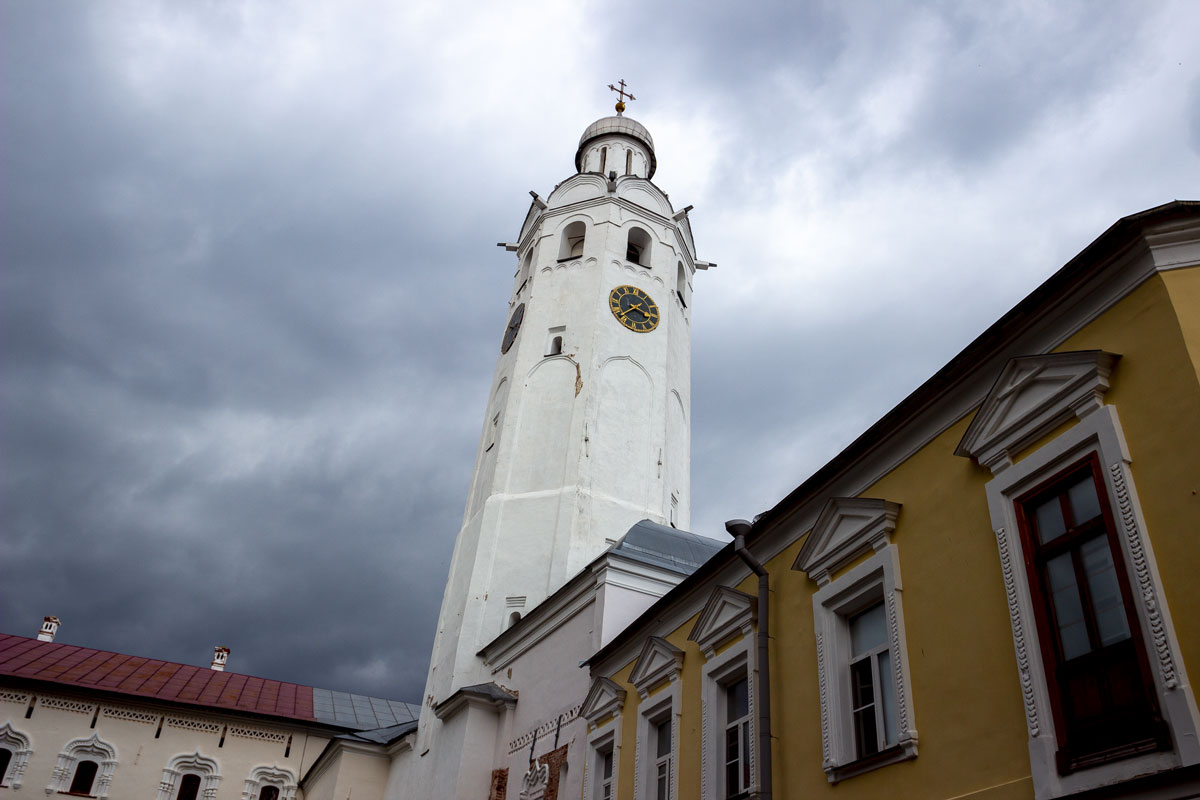
The fortress walls in Novgorod were built as early as 1044, but like everywhere else, the first kremlin was made of wood, so it burned down many times and was rebuilt. The modern stone Kremlin was built in 1490.
You can take a walk along the Kremlin walls.

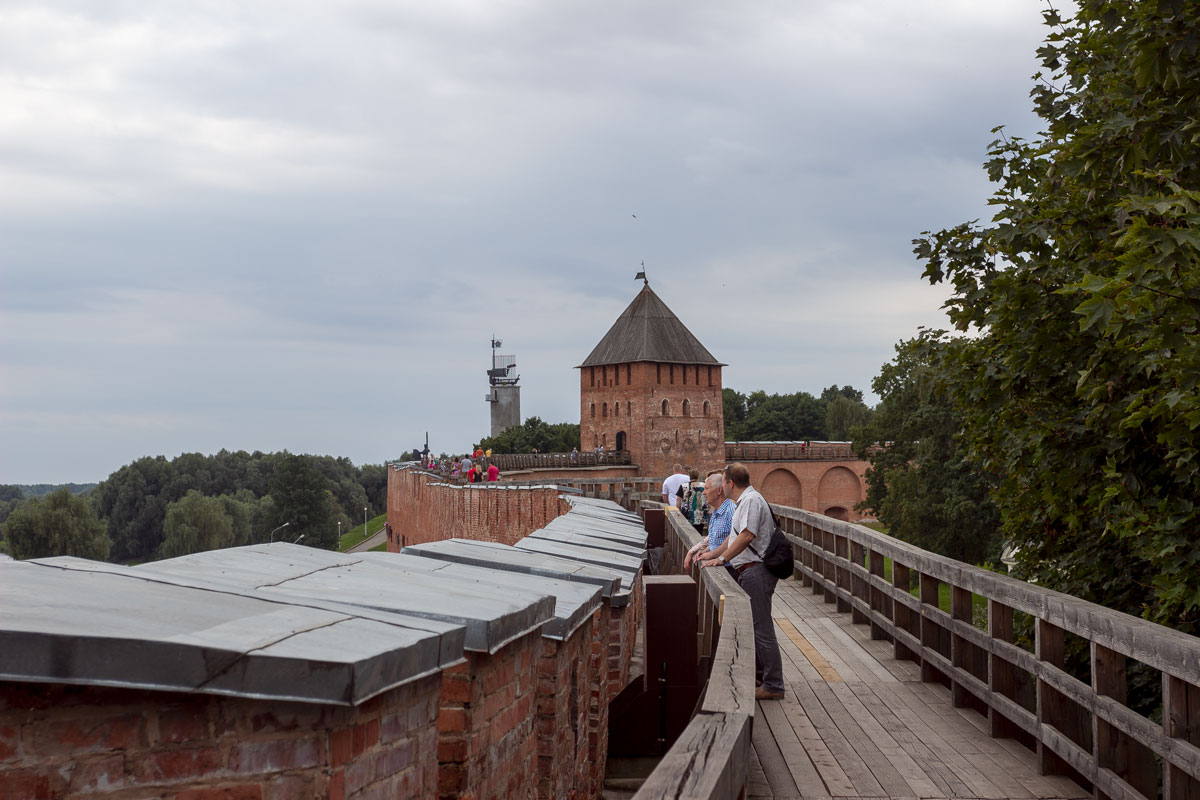
Of course, Novgorod Kremlin is far from being as impressive as the Smolensk Kremlin. The length of the wall is only one and a half kilometers. But it’s still interesting.

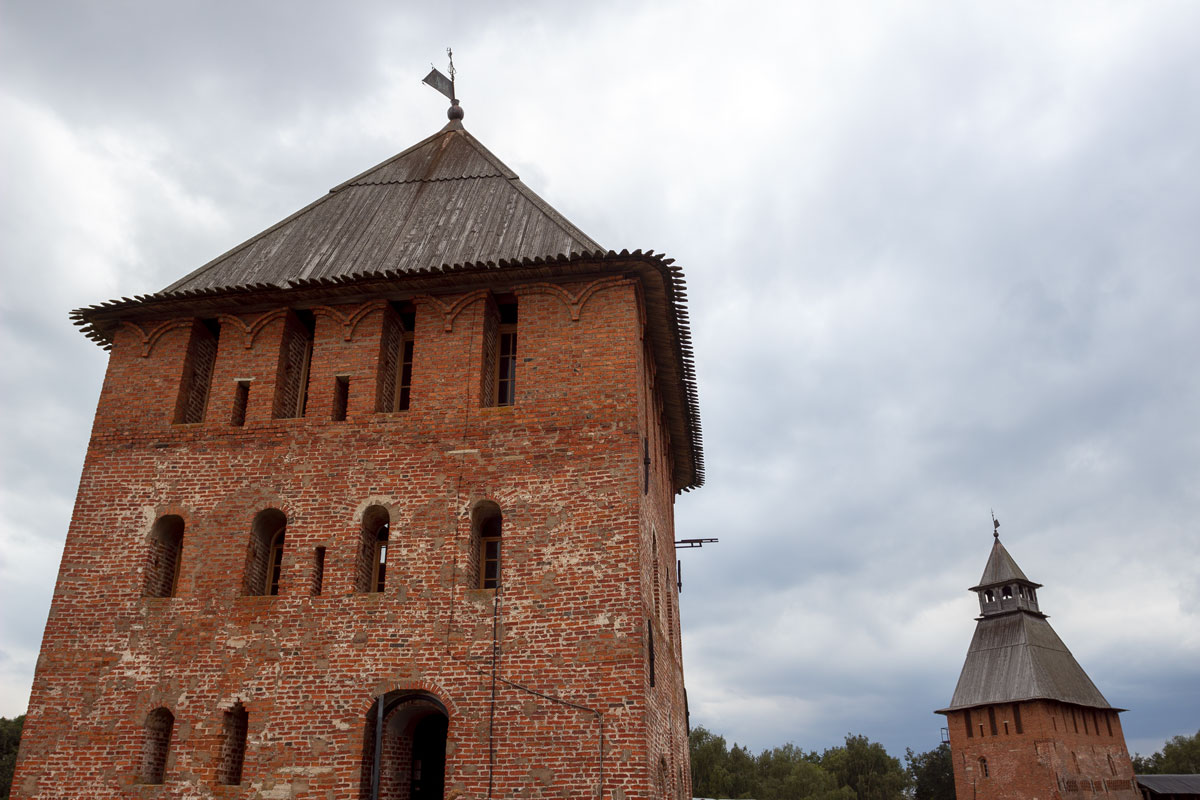
View from the Kremlin wall of the city beach.
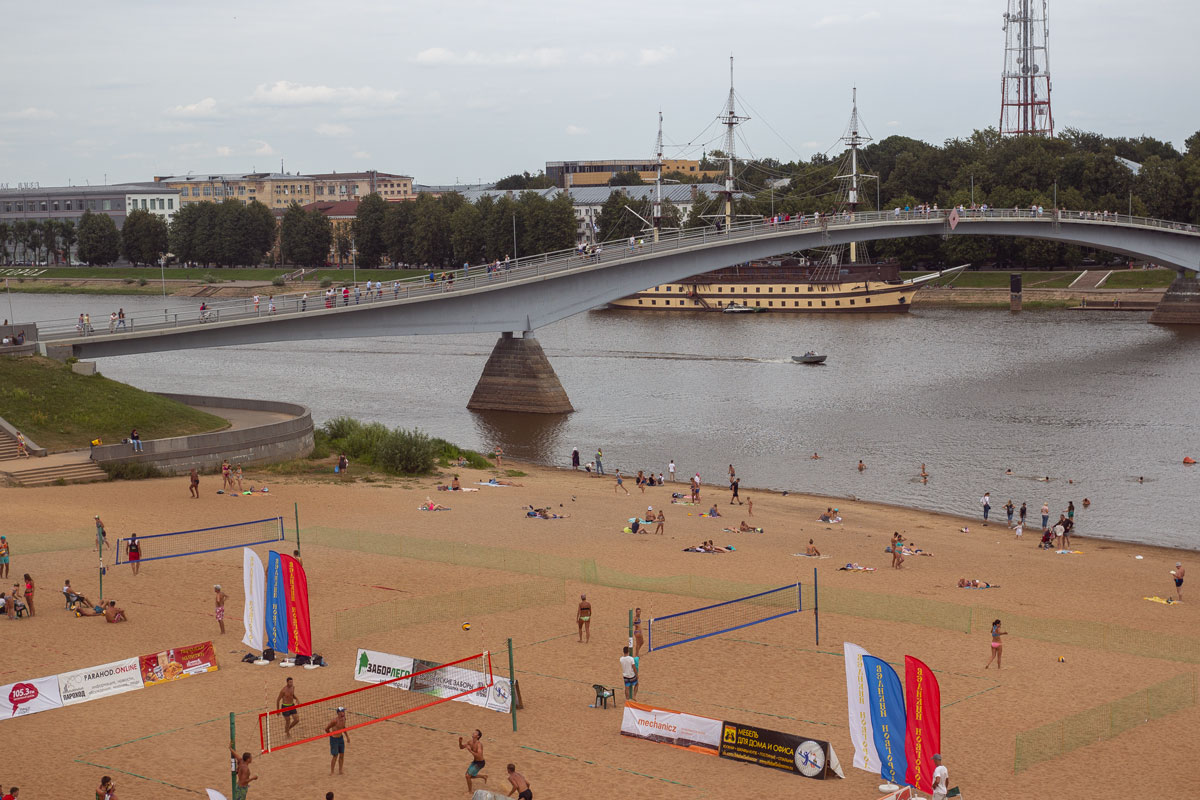
There is a lot of old Russian heritage in Novgorod. The reader should know that Novgorod is the last remnant of Russia that was not affected by the Tatar-Mongol yoke. Veliky Novgorod paid tribute to the Mongols, but was not subjected to devastation, remaining a democratic republic until the Mongol affairs were concluded by the Russians themselves.
At first, after the victory over the yoke, Ivan III dealt a blow to Novgorod. As a result of the long war with Moscow, the Novgorod Republic was destroyed and became part of the Moscow Principality. Further devastation and pogroms were provided by Ivan the Terrible.
The capture of Pskov and Novgorod marked the completion of the construction of a totalitarian state with its center in Moscow and a political system borrowed from the Mongol yoke. Later, this process would be called the unification of Russia, and the resulting state — the Russian Tsardom, then the Russian Empire, and later simply Russia. The preceding period, in which Russia consisted of independent city-states and republics with a democratic system, will be stigmatized as “feudal fragmentation”.
After Ivan the Terrible, the history of Novgorod was buried in the ground, and it was only in 1951 that they began to dig it up when a piece of birch bark with inscriptions in Old Russian was suddenly discovered. When such pieces begin to be found by the dozens, they will be called birchbark documents and assigned numbers to them.
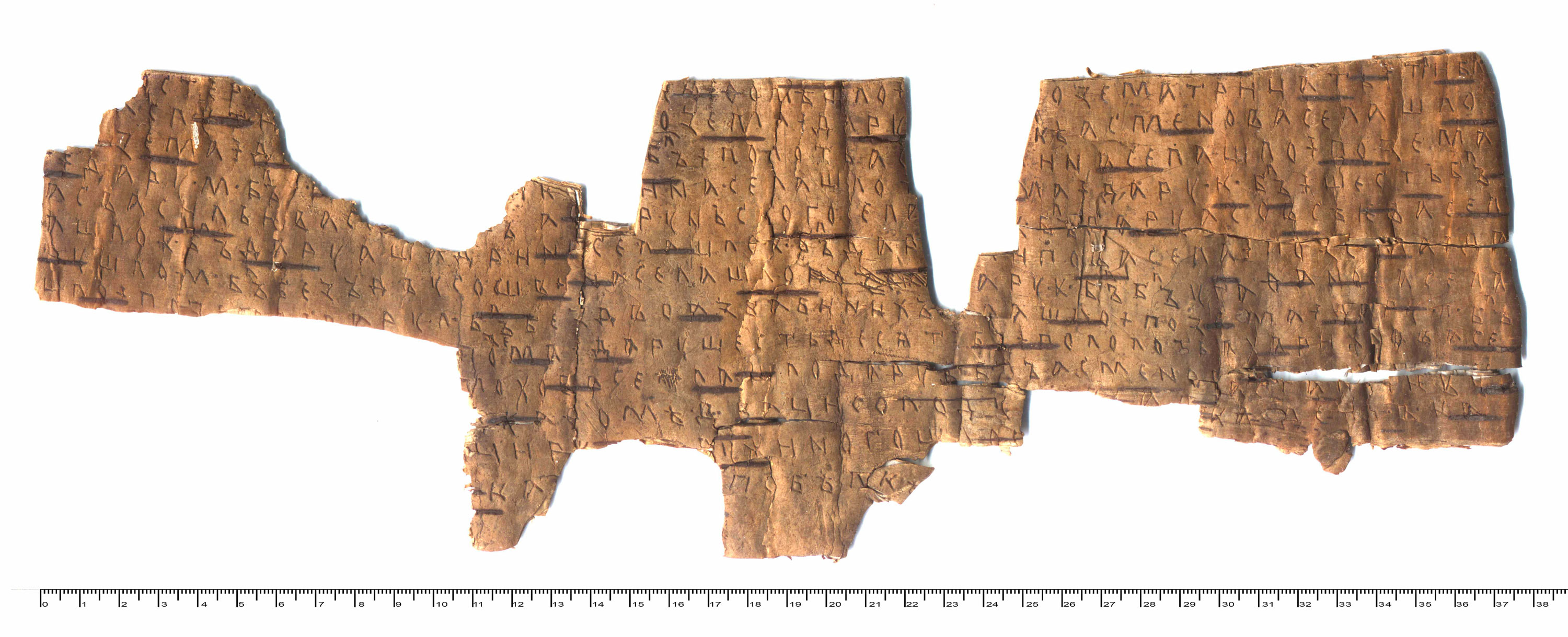
The greatest linguist of our time, academician Andrey Zaliznyak, joined the work on birchbark documents in 1982 and reconstructed the Old Novgorod dialect of the Russian language, which he described in a fundamental work.
In 2000, the oldest book of Ancient Rus — the Novgorod Codex, containing psalm texts in Old Church Slavonic language was discovered in Novgorod. Zaliznyak took on the reconstruction of the book and identified hidden patterns in the use of particles “же”, “ли”, “бы”, and “то” — so-called enclitics.
Later, using the discovered pattern, Zaliznyak will solve the most difficult problem of Russian linguistics — he will prove the authenticity of “The Tale of Igor’s Campaign”. Zaliznyak’s conclusion is unambiguous and brilliant in its interpretation: a hypothetical forger of “The Tale” would have had to possess such a vast knowledge of Old Russian language that their existence is excluded.
However, it is better for Zaliznyak himself to tell about it.
Well, excavations are still ongoing in Novgorod.
The cultural layer of the ancient republic covering an area of 350 hectares reaches a depth of 8 meters — an unimaginable depth for Russia. Novgorod is a paradox, a nonsense, an archaeological paradise, the greatest gift for researchers, historians, culturologists, and linguists.
Novgorod is located on dense clayey soil that hinders the drainage of precipitation, preserving all the moisture. The high soil humidity not only prevented artifact decay (for which air is needed), but also hindered the city’s inhabitants from digging deep foundations and building cellars. That is why so many antiquities have been preserved in Novgorod.
Currently, more than 1100 birchbark documents have been found in Veliky Novgorod, while in all other cities of Russia, Ukraine, and Belarus combined — there are just over 100.
Moreover, anyone can also visit the excavations. For example, the St. Nicholas Cathedral of 1113, which has absolutely incredible paintings inside. The feeling is completely different from any other Orthodox church. It is really something ancient.
Thank God that there are no services being held in the cathedral — the priests would instantly kill this delicate atmosphere of unity.

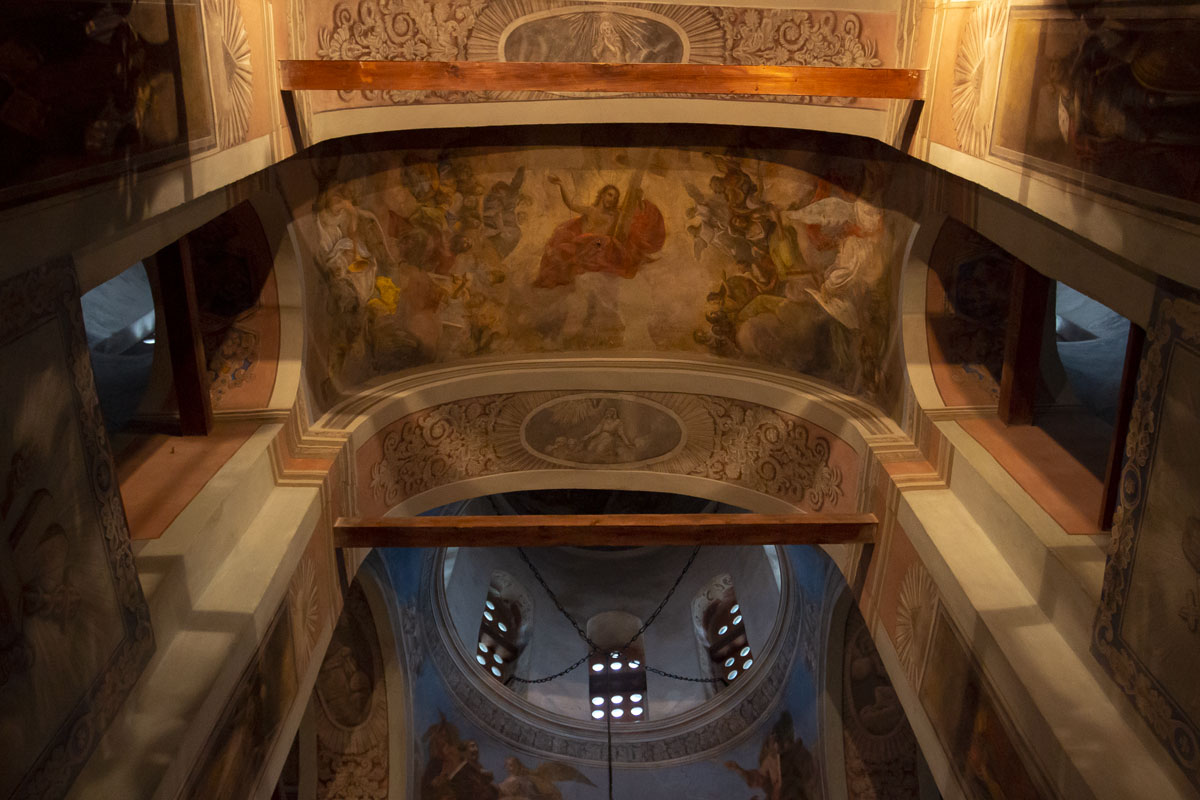
The excavations are taking place near the cathedral and even inside it. Fragments of the “Last Judgment” were uncovered on the walls.

A piece of 12th-century fresco “Job on the Dunghill” has been perfectly preserved. Job is a prophet from the Old Testament. For his righteousness, God, at Satan’s suggestion, struck Job with leprosy (sic!). In order not to infect anyone, Job went into quarantine outside the city, where he sat in a pile of manure for many years, scraping the leprous sores off his body with a piece of clay jar. And his wife brought him food in a pot on a stick, fearing to become infected.
Thus, the 12th-century Novgorod fresco depicts the first-ever contactless food delivery in history.
Still have doubts about whether to go to Novgorod or not?

Veliky Novgorod is indeed a great city, perhaps the greatest city in Russia. The only question is how many days to devote to it. I stayed here for a very short time, less than a day, and I feel somewhat awkward praising it without really exploring everything. Perhaps it is worth walking around here for a week, thoroughly studying the history of the city. It is worth not only visiting Novgorod itself but also traveling around the region, for example, visiting Staraya Russa.
Even five kilometers away from the city, it is incredibly beautiful.
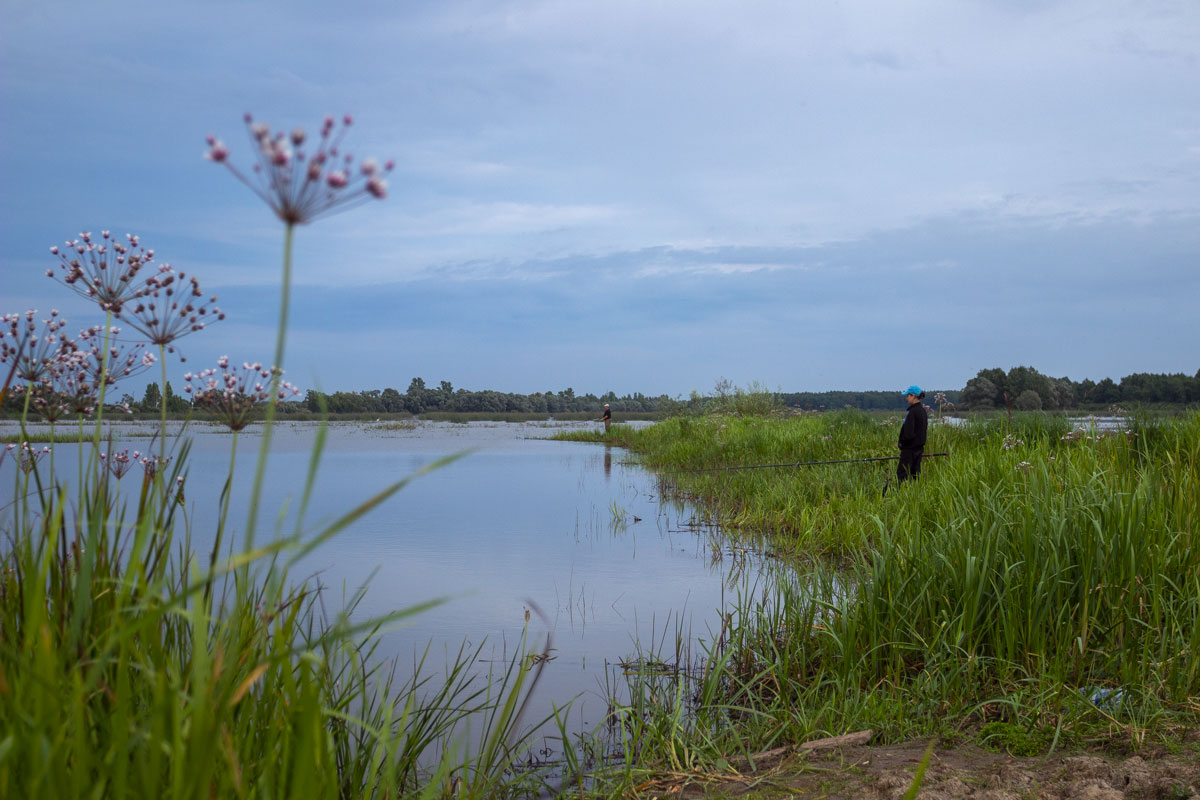
Simple rural landscape looks like an oil painting.

How is this possible?

This is just Russia. The way you want to love it.



